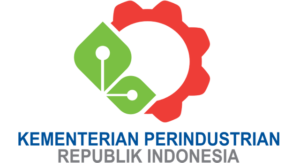Eco-Industrial Parks: A Youthful yet Sustainable Vision
By Parishi Sinha
Eco-industrial parks, or EIPs, are specialised industrial areas allowing businesses to collaborate to improve their respective economic, environmental, and social impact through shared infrastructure, waste management, and energy exchange. EIPs represent a symbiotic relationship between industries and businesses as the waste or by-products of one becomes useful resources for another, incorporating environmental sustainability with economic growth. Thus, this also promotes the regulation of a circular economy and highlights the various opportunities businesses can utilise to recycle and increase resource conservation. They balance environmental preservation with industrial growth, linking to SDG 9 and SDG 12 by minimizing waste. Moreover, their existence tackles modern urbanisation challenges such as reusing industrial pollution and resource strain.
As a project that aims for a cleaner, greener future, they can be extremely relevant to today’s active youth. Firstly, they ensure the availability of green jobs by providing opportunities in green tech, renewable energy sectors, and efficient waste management for the employable youth while simultaneously building a more sustainable economy brick by brick. With growing youth activism, EIPs can drive climate advocacy. Often overlooked in alleviating climate change, they are a substantial approach to curbing climate change by driving for consistent renewable energy adoption and sustainability. However, EIPs make their involvement easier, more feasible, and more productive.
There are advantages to EIPs being present in all sectors, including the economy, the environment, and society. Due to its model being based on resource sharing and energy efficiency, there is a clear possibility of cutting back on costs and saving while also being a conceivable way for the industry to align with long-term environmental goals. Environmentally, they are a prospective method of reducing emissions through their cleaner and greener energy systems and help conserve biodiversity in industrial sectors, thereby increasing the diminishing sustainability. Furthermore, as the name suggests, ‘Eco-Industrial Parks’, are an interdisciplinary project, combining environmental concerns while looking at the industry as a solution by stimulating collaboration between multiple stakeholders such as the businesses, government, and the local community. However, while EIPs are theoretically efficient and ideal, the setup costs for the green technology needed can be initially high. They might require the redevelopment and remodelling of existing facilities and parks. Implementation, especially in LEDC countries where a knowledge and technological gap might be present, might be challenging and require redistributing more resources. In addition to that, smaller enterprises that struggle to meet the prerequisites or the benchmarks might face the risk of exclusion.
Traditional Industrial Parks, or industrial estates, in contrast with EIPs, are areas zoned specifically for industrial growth. They often house heavy industries like refineries, ports, and factories. To guide this transition, UNIDO, the World Bank, and GIZ developed an international framework with 64 benchmarks. There are four total performance areas for these benchmarks including Park Management Performance (nine benchmarks), Environmental Performance (30 benchmarks), Social Performance (14 benchmarks), and Economic Performance (eleven benchmarks).
These benchmarks provide universal guidance for EIPs, leading to standardisation while also providing each park with esources to measure progress and track progress. They would also be resourcing the parks with the tools to conduct a holistic assessment and see what goals have been
achieved and what targets to set next. Additionally, the broad objective allows for creating actionable measures, letting the targets be tailored to the needs of each EIP. It incorporates social, economic, environmental, and managerial aspects as a comprehensive measure.
One of the numerous Environmental Performance Benchmarks of the 30, is ‘Renewable Energy Use’ and measures how well a park incorporates renewables like solar or wind to cut emissions. Kalundborg’s renewable energy (Denmark) use is an inspiring model for global EIPs. Its approach proves that large-scale emissions cuts are possible, setting a precedent for parks in places like Indonesia. Locally, it’s exciting to see several Indonesian EIPs have also worked integrating renewable sources, such as solar and bioenergy, to ease clean energy transitions, proving that emerging economies can lead the shift to clean energy. From the youth’s perspective, this benchmark is vital in ensuring climate security through sustainability and countering the long-term effects of climate change. Moreover, using renewable energy serves as a method of expanding the green energy sector, opening up more employment opportunities regarding innovation, policy, and operations – places where the youth can flourish. As one of the leaders spearheading the climate movement, EIPs connect them with probable and critical solutions to the root of the problem.
Another benchmark of the 64, which falls under the Social Performance benchmarks, is ‘Social Inclusion and Community Development’. This is aimed towards the stakeholder local community due to their significant involvement in EIPs. It warrants the benefit of the local community through engagement, inclusivity, and continued development projects. Several parks in China successfully involve local governments in decision-making, providing them with a sense of stature and inclusivity, and amalgamate health programs concerning the community. Some parks even issue vocational training to the local population, improving training and skill education. However, a potential challenge with this specific benchmark is the unintentional ignorance of marginalised or Indigenous communities as outreach can be limited while some industries and parks may find it difficult to merge community views with their goals and action plans, due to their niche, lack of resources, knowledge etc. Youth activism is often rooted in equity and fairness, therefore, something like the EIP provides them with an avenue where industries can elevate the local community, and not exploit them. On top of that, this benchmark actively works on building community resilience, creating partnerships and confidence between the local community and industries, and fortifying long-term societal stability. This could also improve the quality of life for the surrounding population due to reduced pollution, job opportunities, and agency.
Finally, another crucial benchmark from the Environmental Performance benchmarks is ‘Wastewater Management’. This specifically focuses on reducing water pollution through the treatment and reuse of industrial wastewater in EIPs. For example, India has achieved the benchmark by having some of its parks utilise zero-liquid discharge systems, meaning there will be minimal to no industrial wastewater discharge into the environment, to recycle and reuse water. The benchmark also supports and aids in reducing waterborne diseases and therefore environmental protection. Nonetheless, some obstacles that may come with this benchmark are the high costs for treatment plants, and their subsequent maintenance, and the implementation gap which may persist due to technological limitations in attaining the recycling of all the water. This is an efficient way of ensuring sustainability through resource availability for the youth and future generations. Further, resource availability can also ameliorate the generations-long and global conflicts of water scarcity and water disputes. For the up-and-coming industrialists, the industry will therefore be less reliant on external water sources, bequeathing a stronger and more cost-effective industry system. Reduced reliance on external sources would also assist in mitigating the strain these sources often face due to over-usage.
The youth today, as the future leaders of tomorrow, have a lot they could contribute to the effort EIPs are making despite their young age. Primarily, the youth can provide a new and fresh perspective on engaging, inventive, and modernistic solutions to the multiple problems EIPs face and some of their aspects regarding green industrialisation. The collaboration of universities and young scholars with these industries could make this much more possible and accessible. They also make great advocates. Through social media and other forums, campaigning for policies that focus on renewable energy, waste management, social inclusion, etc. while highlighting the importance of such programs has helped campaigning become more facile and elementary. Grassroots activism plays a key role, reinforcing a bottom-up approach to sustainability. Community engagement could also be in the youth’s vanguard by having them lead education initiatives and programs within the local community or online which underline the benefits of EIPs, thereby raising awareness. As someone who directly benefits from these parks, it is also important for the youth to give back to them through these steps.
Eco-industrial parks are more than just a government or business initiative – they are hope for the youth and future generations towards a brighter, cleaner, greener future. It is a place of possibilities, especially for the youth, where they have the stage to display their creative solutions that converge environmental problems, feasibility, and inventiveness to combat urgent issues that plague today’s world.





